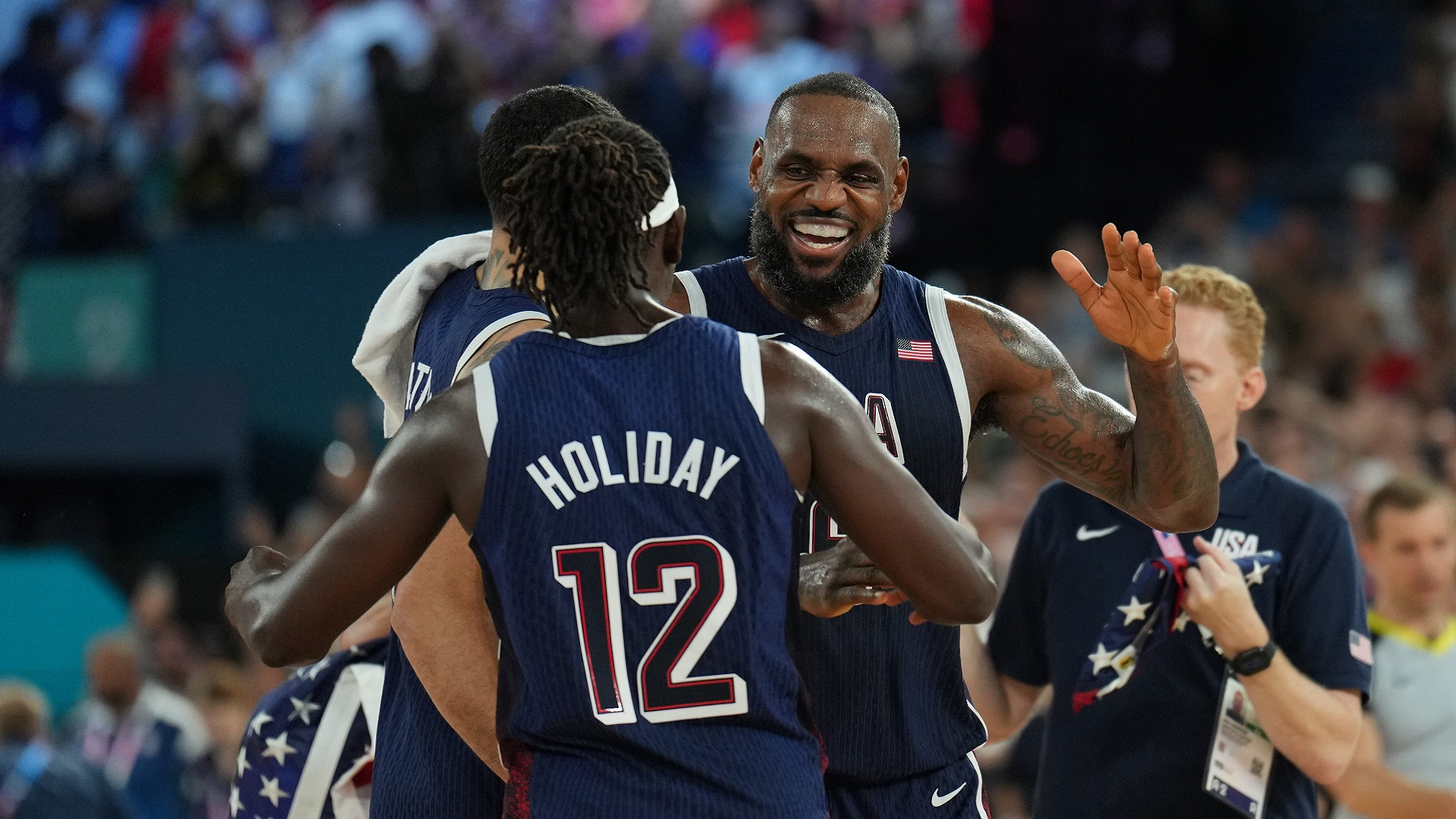


James exhibited a remarkable level of consistency and skill during the tournament, where he played a pivotal role in the U.S. team's success. Across six games, his impressive averages of 14.2 points, 6.8 rebounds, 8.5 assists, and 1.3 steals per game were a testament to his versatility, leadership, and ability to make an impact in multiple facets of the game. His performance was crucial to the U.S. team, as they secured victories in all six of their matches, demonstrating dominance on both ends of the floor. Throughout the tournament, James' scoring ability stood out, as he consistently found ways to contribute points, whether through strong drives to the basket, mid-range jumpers, or knocking down shots from beyond the arc. Averaging 14.2 points per game, he not only provided a reliable offensive option for his team but also served as a calming presence during crucial moments, often stepping up when his team needed him most. His scoring was never forced, as he played within the flow of the game, understanding when to take over and when to involve his teammates. Rebounding was another area where James made a significant impact. Despite not being the tallest player on the floor, his ability to position himself well, read the trajectory of the ball, and time his jumps allowed him to grab 6.8 rebounds per game. These rebounds were not just limited to the defensive end, as he often contributed on the offensive glass, giving his team second-chance opportunities. His hustle and determination on the boards were a reflection of his commitment to doing whatever it took to help his team win. James' playmaking ability was perhaps the most crucial aspect of his game during the tournament. Averaging an impressive 8.5 assists per game, he orchestrated the offense with precision and poise. His court vision was exceptional, as he frequently found open teammates for easy baskets, whether it was through quick outlet passes on the fast break or threading the needle in half-court sets. James' unselfish play helped elevate the performance of his teammates, creating an environment where the ball movement was fluid, and everyone was involved in the offense. Defensively, James was a menace, consistently disrupting opposing offenses with his quick hands and high basketball IQ. Averaging 1.3 steals per game, he was a constant threat to pickpocket ball handlers and intercept passing lanes. His defensive prowess wasn't limited to just steals; he was also a vocal leader on that end of the floor, calling out assignments and ensuring that the team maintained its defensive intensity. James' ability to anticipate plays and react swiftly made him a key component of the U.S. team's defensive scheme. In addition to his on-court production, James' leadership and ability to inspire his teammates were invaluable throughout the tournament. He led by example, playing with heart and determination in every game, whether it was diving for loose balls, contesting shots, or making the extra pass. His presence on the floor instilled confidence in his teammates, and his ability to remain calm under pressure helped the U.S. team navigate through challenging moments. James' performance in the tournament was a true demonstration of his growth as a player. His ability to contribute in multiple ways—scoring, rebounding, playmaking, and defense—showcased his well-rounded game and his understanding of what it takes to win at the highest level. Whether it was shouldering the offensive load, facilitating for his teammates, or locking down opponents on defense, James consistently found ways to leave his mark on the game. Beyond the box score, James' impact on the team was felt in the intangible aspects of the game. His basketball IQ, decision-making, and ability to control the tempo of the game were crucial to the U.S. team's ability to play at their best. He had a unique ability to elevate the play of those around him, making the team greater than the sum of its parts. His leadership extended beyond the court, as he provided guidance and motivation in the locker room and during team meetings.
The 2024-2025 NBA season is just around the corner, and preseason games have already begun to showcase exciting matchups and player performances. Several rookies and returning stars are making headlines with their standout play, giving fans a taste of what's to come in the regular season. Teams are also experimenting with lineups, preparing for the grind of the long season ahead.
In an incredible achievement, Jerry West has become the first three-time inductee into the Basketball Hall of Fame. West's contributions as a player, coach, and executive have solidified his legacy as one of the greatest figures in basketball history. This latest honor cements his status as an iconic figure who has shaped the NBA over several decades.
The NBA offseason saw major trades and free-agent signings that will impact the upcoming season. Star players like Damian Lillard and James Harden were at the center of trade rumors, and many teams are banking on these moves to bolster their rosters. Fans and analysts are keeping a close eye on how these new-look teams perform as the season tips off.
With the NBA regular season starting soon, analysts have begun to predict which teams will dominate. Reigning champions and several powerhouse franchises are expected to compete fiercely, while emerging young teams hope to make a splash. All eyes are on the MVP race, with top players like Nikola Jokic, Giannis Antetokounmpo, and Luka Dončić poised to make strong cases.